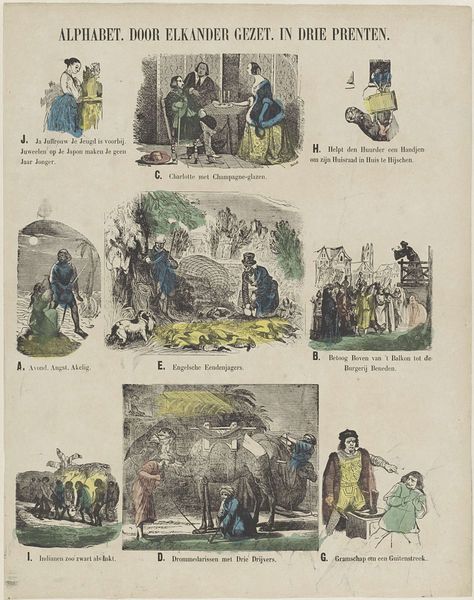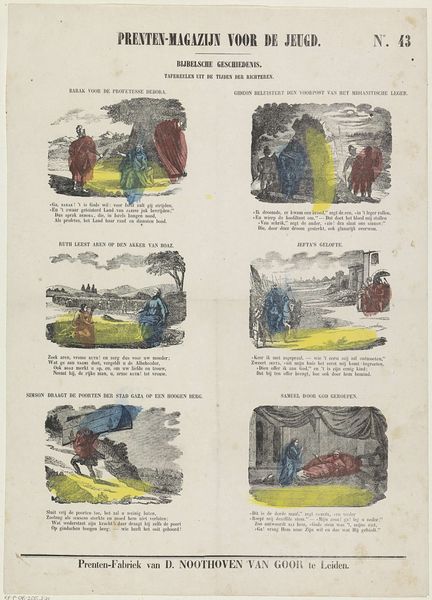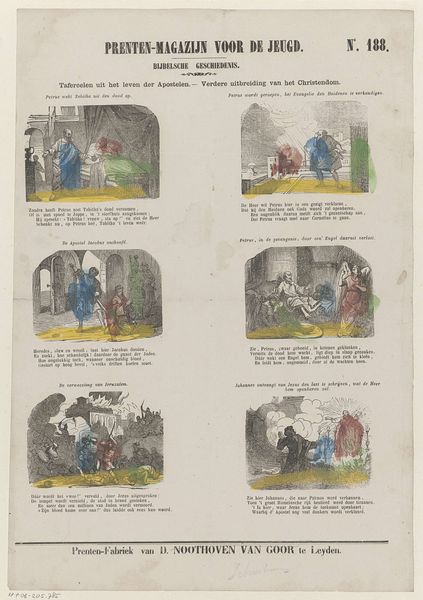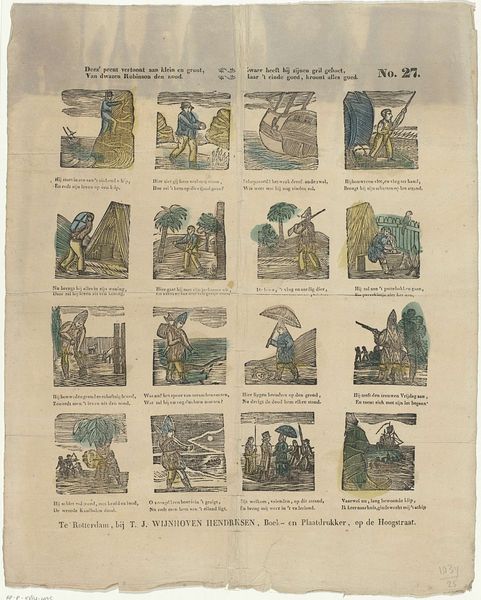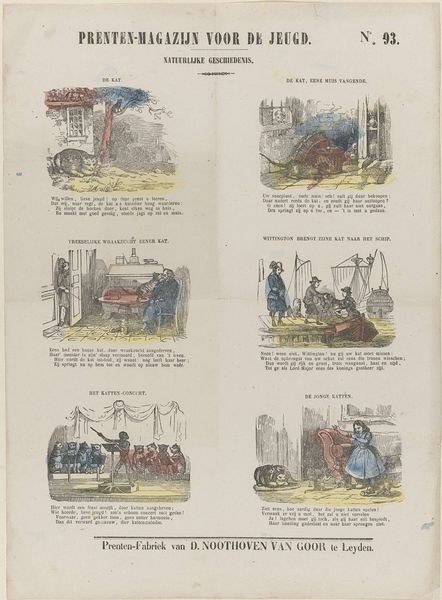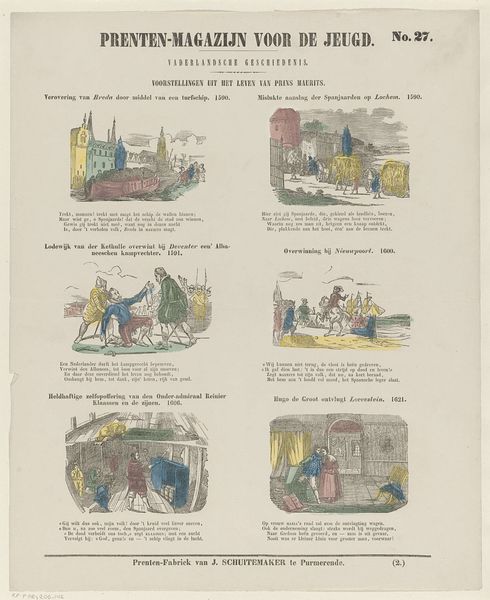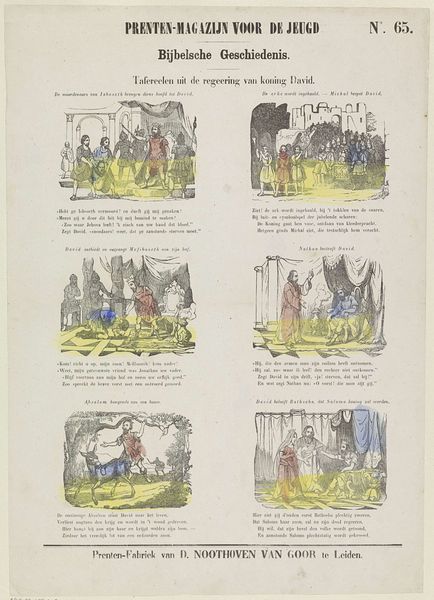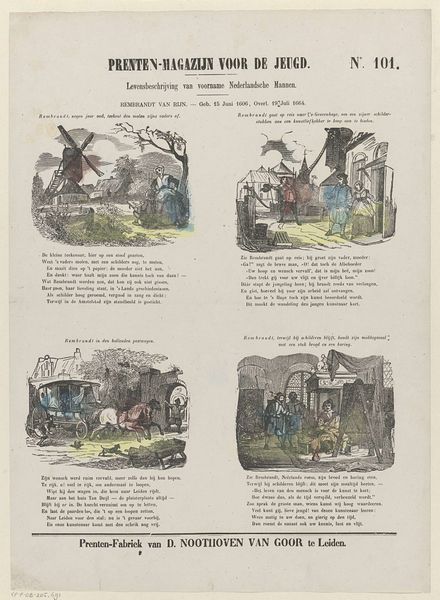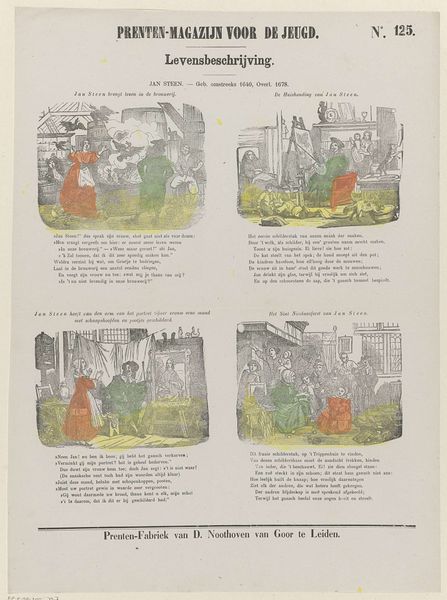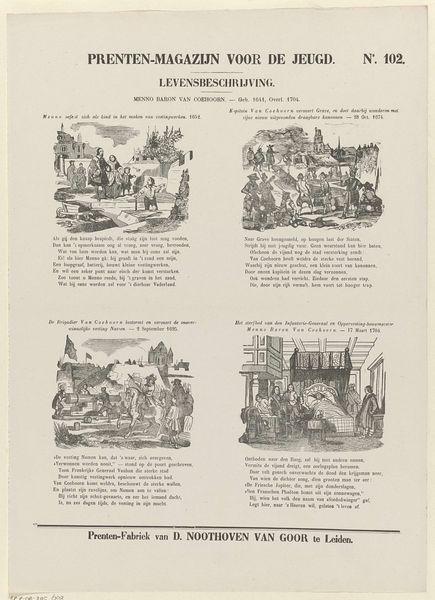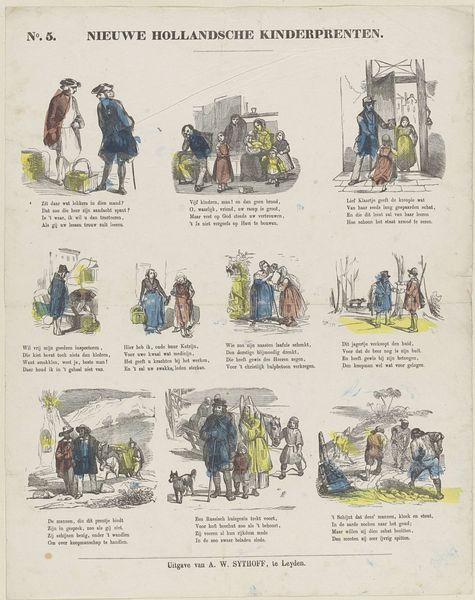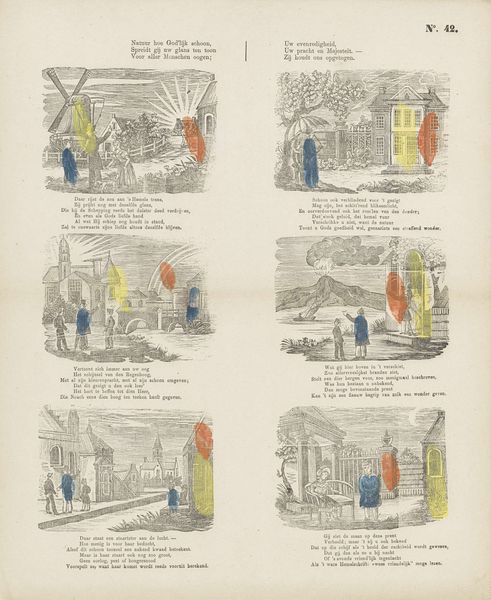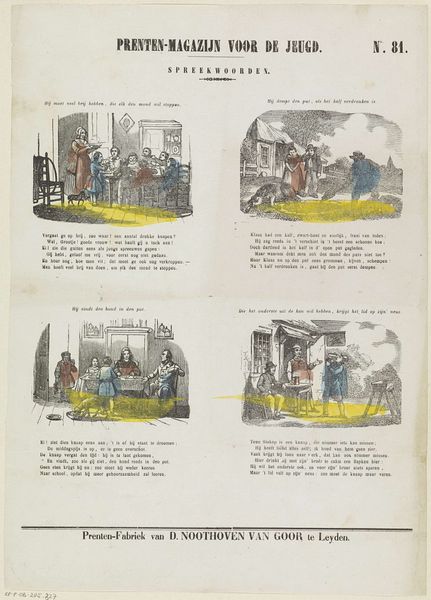![Twee duifjes in een bennetje [(...)] by Albertus Willem Sijthoff](/_next/image?url=https%3A%2F%2Fd2w8kbdekdi1gv.cloudfront.net%2FeyJidWNrZXQiOiAiYXJ0ZXJhLWltYWdlcy1idWNrZXQiLCAia2V5IjogImFydHdvcmtzLzc1YWVmM2FkLWMxNTUtNGZjMi05ZTlmLTAwMmMzZjliYTI5ZS83NWFlZjNhZC1jMTU1LTRmYzItOWU5Zi0wMDJjM2Y5YmEyOWVfZnVsbC5qcGciLCAiZWRpdHMiOiB7InJlc2l6ZSI6IHsid2lkdGgiOiAxOTIwLCAiaGVpZ2h0IjogMTkyMCwgImZpdCI6ICJpbnNpZGUifX19&w=3840&q=75)
graphic-art, print
#
graphic-art
#
narrative-art
# print
#
child
#
folk-art
#
watercolor
Dimensions: height 392 mm, width 312 mm
Copyright: Rijks Museum: Open Domain
Curator: Let’s discuss "Twee duifjes in een bennetje" one of Albertus Willem Sijthoff’s kinderprenten, or children’s prints, dating from around 1861 to 1929. The Rijksmuseum holds this particular print, made with graphic arts techniques. What are your first thoughts? Editor: Well, it's an intriguing, if slightly chaotic, arrangement. Nine vignettes crowd the page. Each scene seems self-contained, but their placement suggests some unseen, overall order. I'm immediately struck by the somewhat muted palette, punctuated by small moments of brighter color. Curator: Agreed. Structurally, the nine panels function almost like a comic strip, presenting miniature narratives within a grid. There's a visual rhythm created by the repetition of form and limited color range. Note, also, how the typography is integrated directly above each scene, becoming a formal element of the work itself. Editor: For me, it conjures up a certain nostalgia, even without knowing the precise stories these vignettes tell. Children at play, domestic scenes… They're visual fragments that tap into collective memories of childhood, even across generations. I'm curious about the cultural values being communicated here. The roles assigned, the activities depicted—it all speaks volumes. Curator: Precisely. The narrative content is deliberately accessible, yet Sijthoff masterfully employs lines to delineate space and figure within the compositions. Take, for instance, the top left image; notice the density of hatching within a restricted area to maximize shadow for narrative impact, suggesting either the boy or dove have upset something within their environment, prompting this remorse. Editor: Symbolically, doves represent innocence and purity, which aligns with the general themes one might associate with images intended for children. There's an intentional emphasis on wholesome, instructive narratives designed to impart moral lessons, like laboring over sums or showing reverence to small birds and playing fairly in childhood. Curator: Looking more precisely at color usage across this piece. We see that color mainly plays a symbolic role, with occasional accent to draw the viewers’ eyes, rather than focusing on mimesis. What this choice yields are more impactful, but localized spots for drawing in viewers rather than relying on color to fully capture one's senses. Editor: Yes, exactly, the choice and control over color is fascinating. The repetition and structure lends a sense of deliberate craft. Considering its age and likely intended audience, the work’s enduring appeal comes from its ability to resonate through shared cultural symbols. Curator: Ultimately, it shows the delicate construction required for producing prints during the mid 19th century and their power in narrative. Editor: A quiet look into how adults framed and interpreted childhood experiences.
Comments
No comments
Be the first to comment and join the conversation on the ultimate creative platform.
